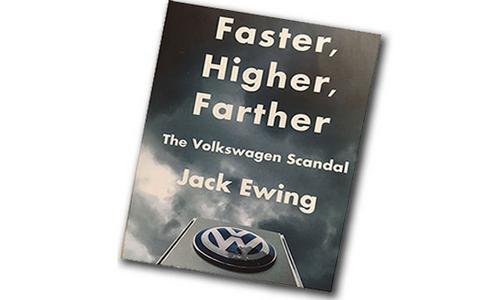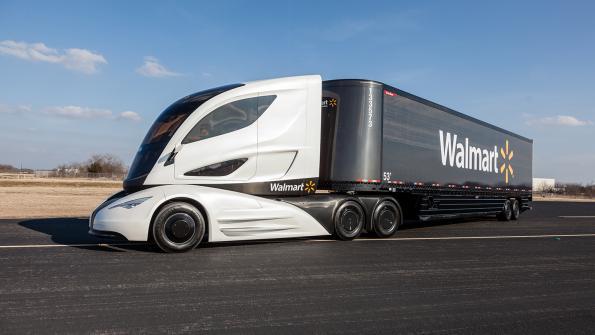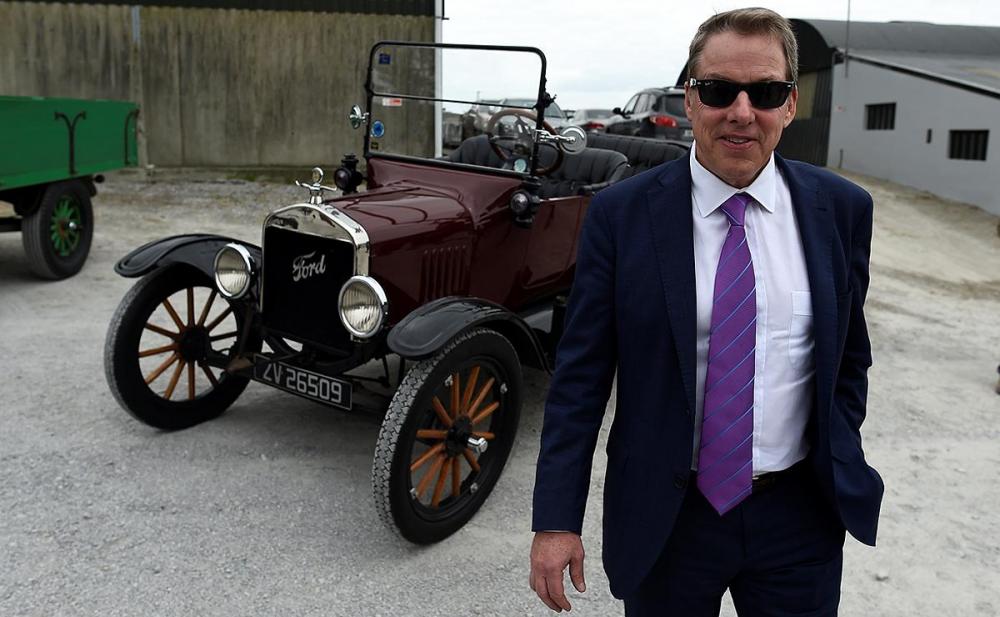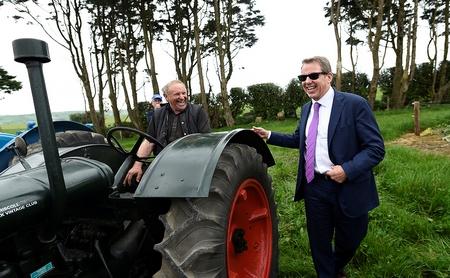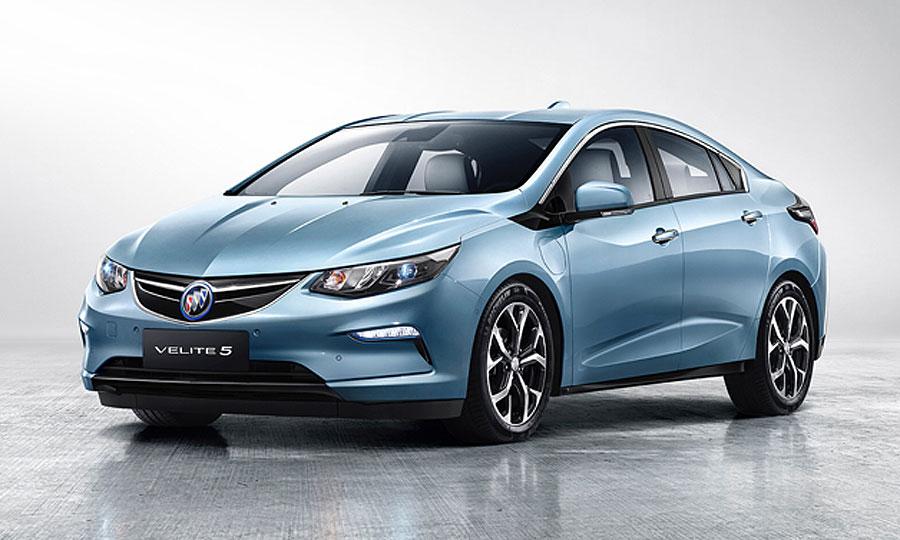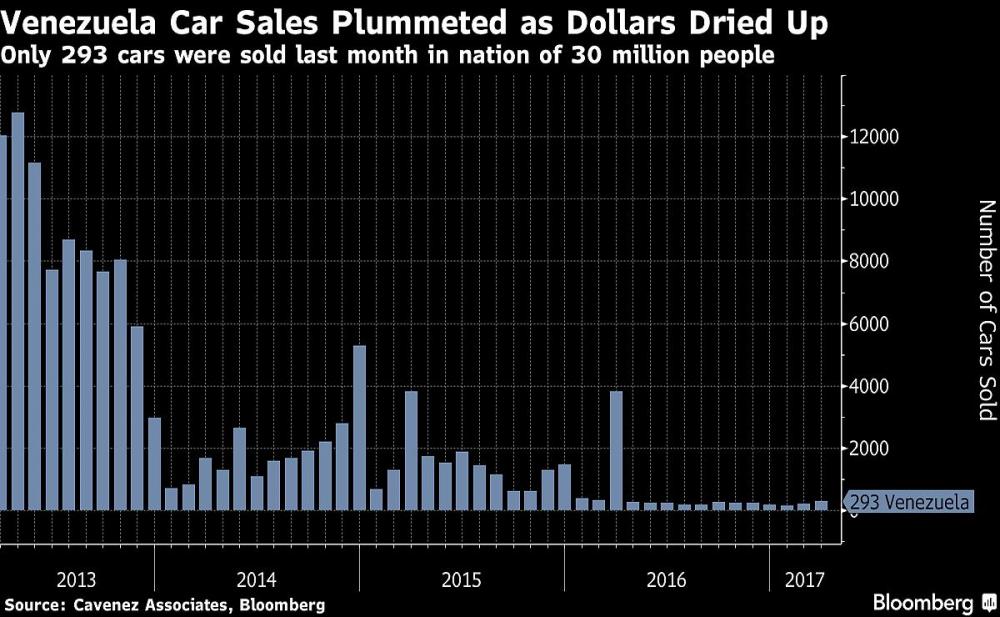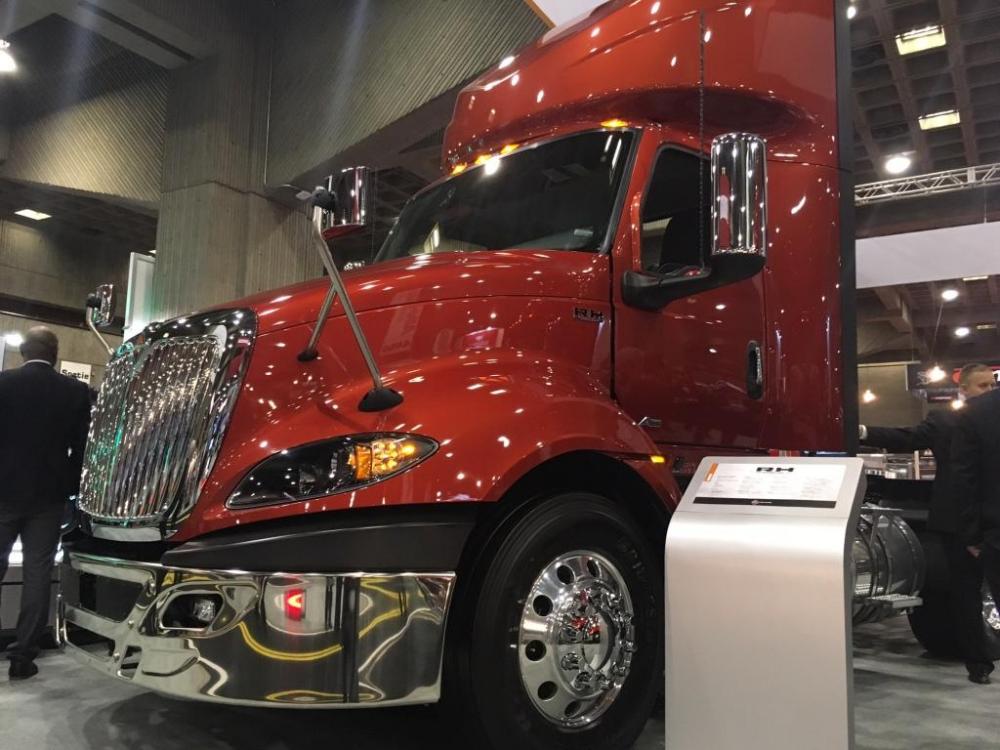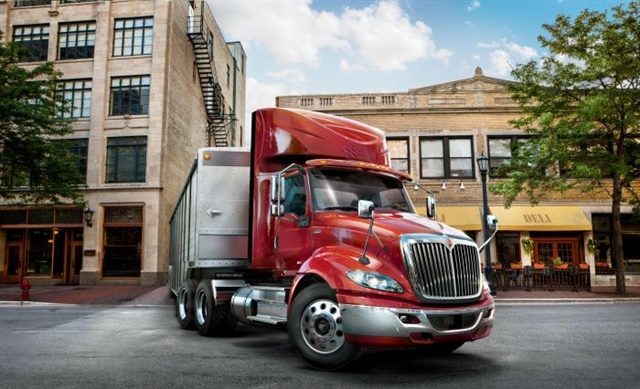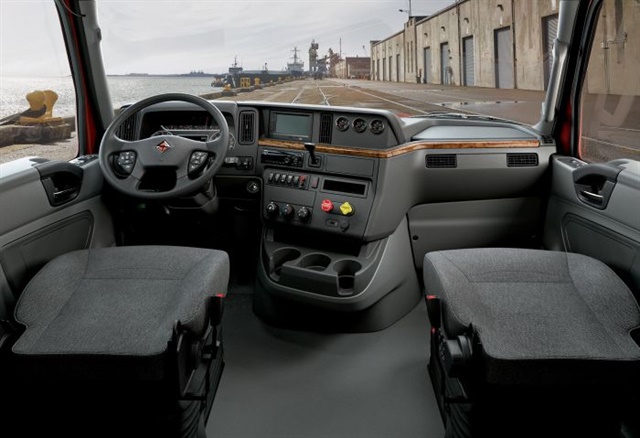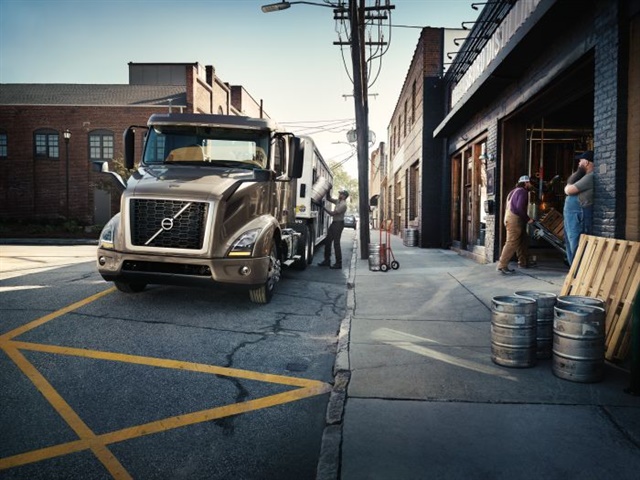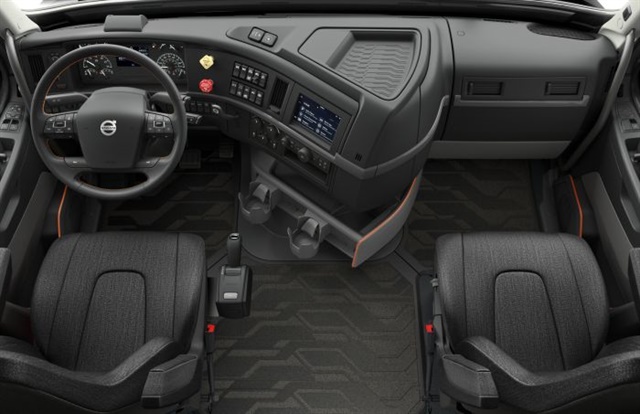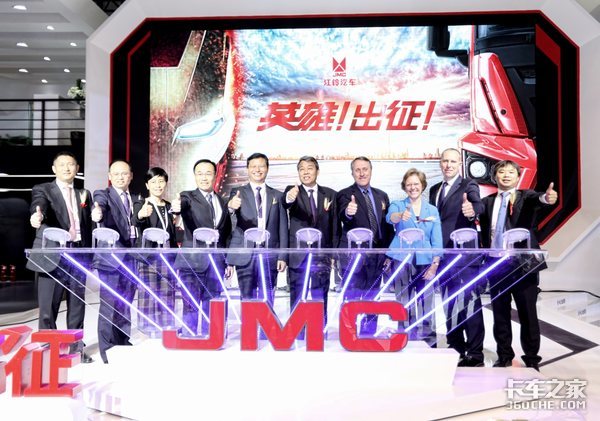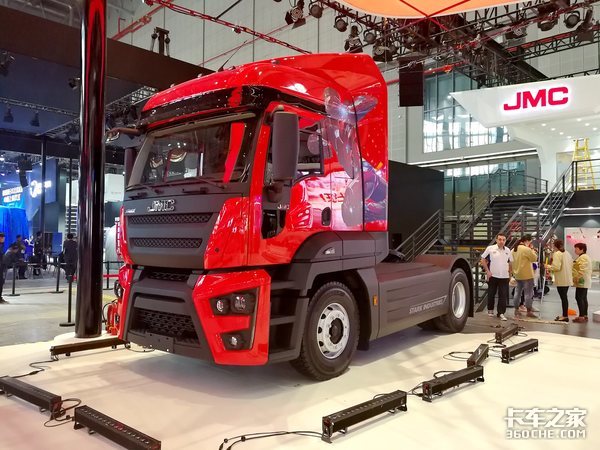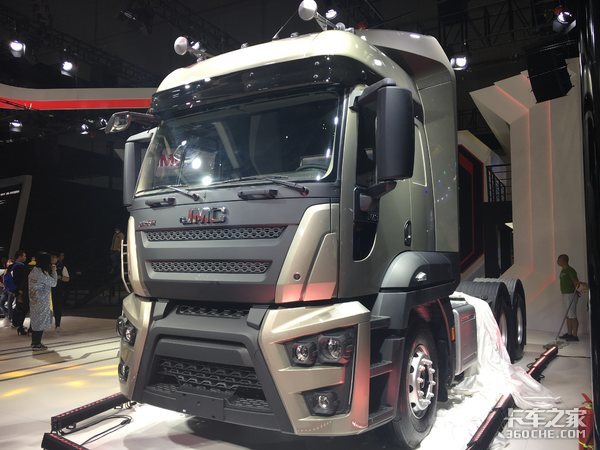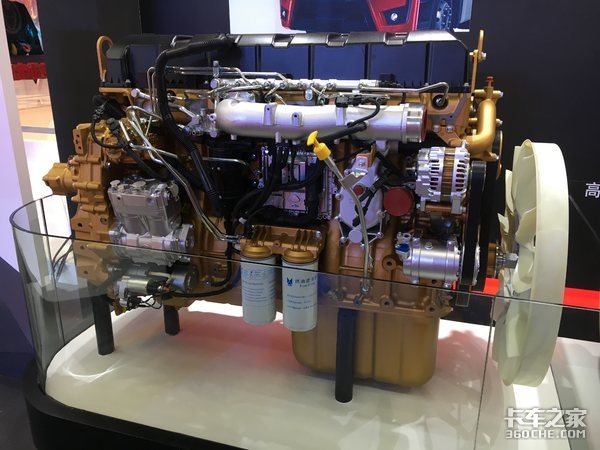
kscarbel2
Moderator-
Posts
18,873 -
Joined
-
Days Won
114
Content Type
Profiles
Forums
Gallery
Events
Blogs
BMT Wiki
Collections
Store
Everything posted by kscarbel2
-
VW diesel whistleblower identified in book Automotive News / April 21, 2017 As Volkswagen’s criminal case closed on Friday, a nagging question persists: Who blew the whistle and first admitted to regulators that VW was lying about its dirty diesels? Volkswagen AG was sentenced in a Detroit courtroom after pleading guilty last month to three federal felonies for diesel emissions violations, which were brought to light based on information given to federal law enforcement from an internal whistleblower. A new book on the VW diesel emissions scandal by a New York Times reporter asserts that it was an American VW executive who first disclosed VW’s criminal acts to regulators. The whistleblower named in the book: Stuart Johnson, head of VW’s Engineering and Environmental Office in the Detroit suburb of Auburn Hills, which has responsibility for VW’s interaction with U.S. regulators. The book, due out in May, is Faster, Higher, Farther: The Volkswagen Scandal by Jack Ewing. Automotive News received a review copy of the book from its publisher, W. W. Norton & Co. “You get the feeling from reading the documents that Johnson always felt queasy about the whole situation,” Ewing told Automotive News. A spokeswoman for VW Group of America said the automaker declined to comment. The cost of Volkswagen’s diesel emissions scandal, which involves about 11 million vehicles worldwide, is now about $25 billion and continues to grow. The scandal, which became public in September 2015, led to the automaker buying back a half million cars in the U.S. and settling a lawsuit with the government for $14.7 billion. It is also responsible for the automaker admitting its guilt to three felonies under U.S. law -- a distinction that sets its actions apart from previous industry scandals. In the book, Ewing quotes an interview with Alberto Ayala, the deputy executive director of the California Air Resources Board, naming Johnson as the first person to reveal to CARB the existence of VW’s “defeat device” software. Key meeting The book quotes Ayala as saying the revelation happened just prior to a key meeting between CARB and VW on Aug. 19, 2015, in El Monte, Calif., and that Johnson in making the disclosure was violating orders he had been given by his superiors. That same meeting is spelled out in the federal indictment of Oliver Schmidt, a former U.S.-based VW executive facing 11 felony charges related to the diesel scandal. That meeting came after weeks of executive discussions concerning how to keep regulators from discovering that VW had installed a device that would make its diesels meet federal regulations only while running on the dynamometer test. The scandal became public Sept. 18, 2015, a month after Johnson met with Ayala, when the EPA announced that VW had violated portions of the Clean Air Act. In the January indictments of six German VW executives -- including that of Schmidt, Johnson’s immediate predecessor in his current job -- the government’s main whistleblower is identified only as “Cooperating Witness 1.” Witness cooperation The indictments say that CW1 “is a VW employee who works in VW’s engine development department.” It’s unclear whether that characterization of CW1’s job was deliberately vague to hide the witness’s identity. The indictment says the witness “has agreed to cooperate with the government’s investigation in exchange for an agreement that the government will not prosecute CW1 in the United States.” A second cooperating witness, CW2, whose identity remains unknown, also agreed to cooperate in exchange for an agreement not to be prosecuted, the indictments say. Johnson was deeply involved in attempting to certify the diesel vehicles equipped with illegal defeat devices. Yet he has not been charged, unlike six German executives also involved in that attempt to certify the diesel engines. FOIA request Automotive News submitted a public records request to CARB on Jan. 19 seeking records from the Aug. 19 meeting. The agency’s response, issued Feb. 24, was largely redacted “as part of an investigation or settlement discussions.” However, among the unredacted portions is an internal email among CARB employees from prior to the Aug. 19 meeting. It reads, in part: “VW has requested a meeting on the diesel issue. Stuart Johnson plans to be in El Monte with 4 staff from Germany.” It also says: “Hopefully, VW will provide the full details on how the controls really work on the in use vehicles and the 2016 vehicles that have cert(ification) pending.” Ewing verified to Automotive News his conversation with Ayala. A spokeswoman for former U.S. Attorney Barbara McQuade, whose office prosecuted the VW scandal and continues to pursue VW executives, declined to comment, citing the ongoing investigation. .
-
Yet another black eye for the TSA --------------------------------------------------------------------- CNN / April 21, 2017 A federal air marshal on a transatlantic flight left her loaded service weapon in the airplane's bathroom, where it was discovered by a passenger who gave it to a crew member before it was returned to the federal agent. The incident happened aboard Delta flight 221, which was traveling from Manchester, United Kingdom, to New York's JohnF.KennedyInternationalAirport on April 6, and was reported to the air marshal's management days later. The Federal Air Marshal Service said the agent in question is a relatively new hire who should have been placed on leave for leaving her gun. Instead, the agent remains on active flight duty. A former federal air marshal said newly hired air marshals do not currently receive on-the-job training. "Air marshals work in punishing conditions, labor under poor leadership and have seen their law enforcement functions curtailed by an administration that lacks vision. The problem is not the air marshals, it's the TSA," said John Casaretti, president of the Air Marshal Association and a former air marshal. CNN has been unable to find a single incident in which a federal air marshal deterred or intervened in a terrorist plot since the organization was ramped up after the September 11, 2001, attacks. Although it has an $835 million budget, agents cover less than 1% of US domestic and international flights. A CNN report in 2015 exposed the long hours, chaotic schedules and use of drugs and alcohol among federal air marshals, which has led to suicides and suicide attempts by the agents. In that report, CNN obtained a now-classified study commissioned by the TSA that revealed 75% of air marshals flying domestic missions were sleep-deficient. The percentage was even higher on air marshals assigned to international assignments, where 84% of agents were identified as sleep-deficient. According to the 2012 study conducted by HarvardMedicalSchool's division of sleep medicine, "the acute and chronic lack of sleep substantially degrades a federal air marshal's ability to react and think quickly." TSA officials insisted at the time that air marshals' schedules ensure appropriate rest periods and that agents have access to a "robust health, fitness and wellness program."
-
Mack Now Offers 16,000 Pound Front Axle on Pinnacle
kscarbel2 replied to kscarbel2's topic in Trucking News
FYI - Roy Horton was a marketing (advertising) manager at Volvo 3P* for alternative fuel and driveline marketing from 2010. In 2014, he was reassigned to the Mack brand as powertrain product marketing manager. In 2016, he became the Mack brand director of product strategy. * Volvo 3P was a business unit formed by ousted Volvo CEO Olof Persson to manage the centralized product development for the truckmaker’s four truck brands (Volvo Trucks , Renault Trucks , UD Trucks and Mack Trucks). 3P stand for Product planning, Product development and Purchasing. Under current ex-Scania CEO Martin Lundstedt, the 3P structure was terminated and the brands once more separated. -
Natural Gas Truck Sales Strong, but Market Stagnates Overall Heavy Duty Trucking / April 21, 2017 North American natural gas heavy duty retail sales were strong to start 2017, bolstered by refuse fleets, transit, and school bus operators. Most of the activity seems to be coming from fleets replacing older vehicles or adding more vehicles, helping the natural gas truck industry to record its best January in three years and a positive year-to-date total through February. Compared to the entire market, however, natural gas truck sales have stalled somewhat, caused by low diesel prices and increased competition from electric and hybrid-electric vehicle options. It’s estimated that natural gas vehicles made up only 3% of the market in 2016. “Given relatively low diesel fuel prices and the subsequent price narrower spread between CNG and diesel, payback times remain longer than most truckers’ trade cycles,” said one market analyst. “With the recent news coverage of Nikola Motor Company, Tesla, Toyota, and others, it is important to keep a finger on the pulse of the entire alternative fuels market," he continued. "Whether it is natural gas or hybrid electric, companies need to be well informed of the market options when considering alternatives for their current vehicles.”
-
Transport Topics / April 21, 2017 While sales of Class 8 trucks powered by natural gas remain low, U.S. and Canadian natural gas heavy-duty retail sales overall had a healthy start to 2017, boosted mostly from refuse fleets, transit and school bus operators. For 2016, the natural gas share of the Class 8 truck market was estimated at 3% due to higher new-truck sales and lower natural gas penetration. “Given relatively low diesel fuel prices and the subsequent price narrower spread between CNG and diesel, payback times remain longer than most truckers’ trade cycles,” said one market analyst. Nonetheless, “The best January in the past three years set up the positive year-to-date February performance. Among truckers, it appears as though the majority of incremental volume came from those who currently have natural gas vehicles and are replacing units or increasing their number."
-
Fleet Owner / April 21, 2017 At Walmart's annual Milestone Summit today, the company launched a sustainability platform inviting suppliers to join in committing to reduce greenhouse gas emissions resulting from their operations and supply chains. Dubbed "Project Gigaton," Walmart says the initiative will provide an emissions reduction toolkit to a broad network of suppliers seeking to eliminate one gigaton of emissions focusing on things like manufacturing, materials and use of products by 2030. One gigaton, or one billion tons, of emissions is the equivalent of taking more than 211 million passenger vehicles off of U.S. roads and highways for a year, the company points out. Walmart claims it is the first retailer with a verified science-based target emissions-reduction plan. The company has set targets to reduce emissions significantly by 2025. The retailer will also work to reduce CO2e, or carbon dioxide equivalent, emissions from upstream and downstream sources by a gigaton between 2015 and 2030. Project Gigaton is part of a series of Walmart sustainability initiatives focused on addressing social and environmental issues in ways that help communities while also strengthening business. For example, by investing in solar energy, Walmart notes it has helped to support jobs for American solar companies. Walmart is now one of America's leading commercial solar and on-site renewable energy users, the company says, and gets about 25 percent of its global energy from renewable sources. In another example, by doubling the efficiency of its U.S. fleet from 2005 to 2015, Walmart says it saved nearly $1 billion compared to a 2005 baseline. "We are proud of the improvements we've made in reducing our own emissions, but we aim to do more. That's why we're working with our suppliers and others on Project Gigaton," said Kathleen McLaughlin, senior vice president and chief sustainability officer for Walmart. Support from environmental advocates Walmart's summit and new initiatives met with praise from environmental groups. "Today, business stepped up to the plate to lead on climate in a way that supports both people and the planet. Business leadership and innovation have always been an American hallmark, and that's never been clearer than right now," stated Fred Krupp, president of the Environmental Defense Fund. "A challenge like Project Gigaton catalyzes innovative solutions around the globe. "And it makes clear that companies won't wait — nor should they," he added. "Smart companies like Walmart and the suppliers that will join them on this journey have moved far beyond the false either/or choice of a healthy economy or a healthy environment. We need both, and these businesses are leading the way." .
-
Mack Now Offers 16,000 Pound Front Axle on Pinnacle
kscarbel2 replied to kscarbel2's topic in Trucking News
Mack brings burly front axle to Canada Fleet Owner / April 20, 2017 OEM will make its FXL 16,000-lb. front axle available on Pinnacle Axle Back and Axle Forward models. Mack Trucks is now making its proprietary FXL 16,000-lb. front axle available for order on its Pinnacle Axle Back and Axle Forward models. Announced during the ExpoCam truck show in Montréal, Quebec, Canada, the FXL 16,000-lb. front axle option is designed for motor carriers hauling heavier loads. Mack noted that its 16,000-lb. front axle is also an available option in the U.S. as well. “Our 16,000-lb. front axle improves performance with the same legendary durability and reliability that Mack pioneered,” noted Roy Horton, Mack’s director of product strategy, in a statement. “It’s designed significantly heavier so that our customers can improve their efficiency by transporting more payload at one time,” he said. Developed to provide a stable and smooth ride under demanding loads, the 16,000-lb. Mack FXL axle also simplifies maintenance, improving uptime for customers, Horton pointed out. -
Ford Executive Chairman Bill Ford Returns to Family’s Ancestral Home Town to Mark Centenary of Ford in Ireland William Clay Ford Jr, Executive Chairman of Ford Motor Company, celebrates 100 years of Ford in Ireland by unveiling plaque in Ford family’s ancestral home town of Ballinascarthy Great-grandson of Ford Motor Company founder, Henry Ford, to participate in civic reception hosted by the Lord Mayor of CorkCity, attended by 300 current and former Ford employees Ford factory founded in Cork, Ireland, was established in April 1917 – the first purpose-built Ford Motor Company factory outside of North America CORK, Ireland, Apr. 20, 2017 – William Clay Ford, Jr., Executive Chairman of Ford Motor Company and great-grandson of the company’s founder, Henry Ford, today unveiled a plaque and bench in Ballinascarthy, Ireland, to commemorate 100 years of Ford in the country. The unveiling took place in the centre of Ballinascarthy, a small village 40 kilometres (25 miles) from Cork city, Ireland, from where Henry Ford’s father, William Ford, and his family emigrated to the U.S. in 1847. The family settled in Michigan, where Henry Ford was born in 1863. “I am excited and honoured to be coming home to Cork to celebrate 100 years of Ford in Ireland,” said Bill Ford. “Ford has deep roots in Cork, not only through my family’s historical connection, but also through the impact that the Ford factory has had as an engine for prosperity for the area over many decades.” During his visit Bill Ford will also participate in a civic reception at CorkCity Hall, hosted by the Lord Mayor of CorkCity, at which the contribution of employees of Henry Ford & Son Limited during the past 100 years will be recognised. The event will be attended by 300 current and former employees. Henry Ford remained conscious of his family’s heritage throughout his lifetime, choosing his ancestral home city of Cork as the site for the first purpose-built Ford Motor Company factory outside of North America. The Ford factory in Cork was established in April 1917. As Henry Ford said in his own words: “My ancestors came from Cork, and that city, with its wonderful harbour, had an abundance of fine industrial sites. There was, it is true, some sentiment in it (the decision to establish the factory in Cork).” The company that Henry Ford legally established in 1917 was entitled Henry Ford & Son Ltd., and that continues to be the legal name of Ford in Ireland to this day – the only Ford entity in the world to include the full name of the company’s founder in its title. The Fordson tractor was initially the main product of the Cork plant, which by 1929 had become the largest tractor factory in the world. The factory also produced passenger cars including the iconic Model T. The last Model T ever produced by Ford anywhere in the world rolled off the Cork factory production line in December 1928. The Model A, Model BF, Model Y, Prefect, Anglia, Escort, Cortina and Sierra models also were manufactured in Cork until the plant’s closure in 1984. Ford today has the widest network of dealers of any automotive manufacturer in Ireland, with 52 dealerships providing direct and indirect employment to 1,000 people across the country. .
-
Is this an AB model Mack
kscarbel2 replied to Truck Shop's topic in Antique and Classic Mack Trucks General Discussion
Yes, it is an AB. -
Styled under the Buick theme, the Volt is arguably more attractive. Not allowing Americans to buy it is puzzling.
-
Autoweek / April 20, 2017 Buick rolled out its version of the Chevrolet Volt for the Chinese market this week, with the upscale hybrid dubbed Velite 5 in the Middle Kingdom. Buick offers far more models in China than it does in the U.S., and analysts predicted a Buick version of the Volt would be offered there before the second-generation model even debuted. Just like the Volt, the Buick Velite 5 will be powered by two electric motors drawing juice from a lithium ion battery and a 1.5-liter inline-four range extender. In contrast with the 53-mile pure-electric rating in the U.S., the Velite 5 has been rated at 72 miles for the Chinese market, reflecting a different testing methodology. "Equipped with GM’s latest intelligent electric drive system, the Velite 5 offers up to 768 kilometers of range in extended-range mode," Buick says. "Its prioritized pure electric driving mode provides 116 kilometers of range, fulfilling consumers’ demand to commute with zero petroleum consumption and zero emissions." Seven hundred sixty-eight kilometers is 477 miles -- significantly higher than the 420-mile rating of the Volt, but in terms of engineering, the powertrains are nearly identical. Aside from a mildly restyled exterior, the Velite 5 will offer a more upscale interior along with an upgraded air-filtration system geared for China's high-smog cities -- placed where cars sometimes need a weekly cabin filter replacement. It will also be built in China. How big of a premium will buyers in China pay for the Buick badge? Not a whole lot, it turns out. The Velite 5 GL trim level will be offered starting at the equivalent of $33,300, while the upscale GS model will start at around $37,700. That's before the application of a $5,233 New Energy Vehicle government subsidy, which will bring the starting price down to the high-$20,000 range. The price points are nearly identical to the LT and Premier trim levels of the 2017 Chevrolet Volt, before any federal and state rebates. The Velite 5 will be the second Chinese-market vehicle to get the Buick Blue badging -- to distinguish "new energy vehicles," as hybrids and electrics are referred to in China. The first Buick hybrid offered in China was the LaCrosse. For now, GM does not plan to offer a Buick version of the Volt in the U.S., still smarting from the fallout from the pricey Cadillac ELR, which went of out of production in the U.S. in 2016 after tepid sales and massive price cuts. A Buick version of the Volt makes far more sense in China, where Buick continues to enjoy wild success still not replicated by any other American marque, Cadillac included. Photo gallery - http://www.autonews.com/apps/pbcs.dll/gallery?Site=CA&Date=20170420&Category=SHANGHAI_AUTO_SHOW&ArtNo=420009998&Ref=PH&Profile=1505 .
-
Bloomberg / April 19, 2017 U.S. State Department is reviewing the situation General Motors shut operations in Venezuela after authorities seized the automaker’s local assembly plant and vehicles in the first nationalization of a major company’s operations in the country in more than two years. GM’s factory was “unexpectedly taken by the public authorities, preventing normal operations,” according to an emailed statement. The automaker said it “strongly rejects the arbitrary measures taken by the authorities and will vigorously take all legal actions, within and outside of Venezuela, to defend its rights.” The plant shutdown took place as protesters flooded the capital city of Caracas in the biggest show of opposition to President Nicolas Maduro’s government in months. The auto industry has collapsed, with sales plunging 92 percent in March, as a shortage of dollars has pushed new car prices beyond the means of all but the wealthiest Venezuelans. Venezuela is experiencing the worst recession in decades, with gross domestic product plummeting 10 percent in 2016, according to the International Monetary Fund. Revenue from oil, which accounts for 95 percent of foreign-currency earnings, has tumbled along with prices. With the country short on cash for imports, citizens wait in long lines to find scarce household items. The U.S. State Department is reviewing the details of the case involving GM and is calling for authorities to ensure it’s resolved quickly, spokesman Mark Toner said. “A fair, predictable and transparent judicial system is critical to implementing the essential economic reforms critical to restoring growth and addressing the needs of the Venezuelan people,” Toner said. Clorox Co. halted operations in Venezuela in September 2014 after inflation and government-mandated price freezes made business unprofitable for the seller of products ranging from bleach to salad dressing. Maduro’s government took over and reopened the Clorox sites. GM’s costs GM plans to pay separation benefits to the workers according to Venezuelan law, the company said. The automaker employs 2,678 workers and has 79 dealers in the country with more than 3,900 workers. Currency restrictions continue to plague automakers in Venezuela despite an agreement first reached with Ford Motor Co. in 2015 that allowed the automaker to sell some models in dollars. Under the deal, Venezuelans would pay dealers dollars for production materials imported from abroad and bolivares to cover the costs of assembling vehicles locally. The government followed suit last year with GM, Fiat Chrysler Automobiles and Toyota Motor Corp. Operating in Venezuela has been a costly endeavor for years. GM reported charges of $720 million in 2015 and $419 million a year earlier related to currency devaluation and asset impairment in Venezuela. GM said in its annual report filed in February that it was closely monitoring the environment in Venezuela to assess whether changes meant it no longer maintained control of its local subsidiaries. If such a determination was made, the company said it could incur a charge of as much as $100 million. Foreign companies operating in Venezuela have been beset by disruptions stemming from goods shortages, strikes and police raids. Coca-Cola Co. halted production of sugar-sweetened beverages last year due to lack of raw materials, following disruptions to Kraft Heinz Co. and Clorox. .
-
Navistar reveals new Class 8 regional haul tractor
kscarbel2 replied to kscarbel2's topic in Trucking News
International debuts new regional tractor Jason Cannon, Commercial Carrier Journal (CCJ) / April 20, 2017 International Truck on Thursday continued its product update cycle with the launch of the new International RH Series Class 8 regional haul tractor. The truck, which made its debut at ExpoCam in Montreal, will be the first new model to get International’s new 12.4 liter A26 engine as standard. Navistar will begin taking orders for the RH Series next month. For the RH Series, Navistar engineers redesigned side windows and mirrors to provide enhanced side visibility. The RH Series provides an inside wheel cut of up to 50 degrees delivering a curb-to-curb turning radius of only 27 feet 10 inches. The RH Series is a replacement for the ProStar 113-inch BBC model and the TranStar 107. Like its LT Series truck, the interior for the RH was conceived from a study of interaction points between the driver and truck – everything from what a driver sees to how he moves and reacts in virtually any situation, Navistar says. Features like a large swept-back windshield, optimized mirror placement and an aerodynamic sloped hood for a clearer view, all contribute to greater visibility, the company notes. “We drew upon the expertise of drivers to ensure that the RH Series is the most driver-centric Class 8 regional haul vehicle we’ve ever built,” says Denny Mooney, senior vice president, Global Product Development, Navistar. “Many of our customers tell us that their number-one challenge is attracting and retaining drivers, which is why we put so much effort into understanding and responding to drivers’ needs.” The redesigned interior features a new premium gauge cluster with a digital driver display that places everything within comfortable reach, while offering drivers real-time monitoring of fuel economy and other important alerts in clear sight. The new display also offers up to 15 customizable digital gauges. In addition, the air horn was relocated back to its traditional, intuitive position over the driver door in response to overwhelming driver feedback. Serviceability The cab wiring includes all-new harnessing and an in-cab power distribution module that is inside the truck, tucked away from the elements. All key service points under the hood, inside the cab and around the vehicle are ergonomically designed for easy access and servicing, and many components have been engineered with longer intervals between required maintenance. The new single-canister after-treatment system is 60 percent smaller and 40 percent lighter and also offers faster servicing. The same aerodynamic improvements that boosted the RH Series’ fuel efficiency also yielded a four-Sone decrease in wind noise, which eliminates noise harshness for improved driver comfort. Together, aerodynamic and driveline improvements make the RH Series up to 6 percent more fuel-efficient. The RH Series will be offered in a 56-inch low roof sleeper, 56-inch hi-rise sleeper, day cab with roof fairing, and 56-inch hi-rise sleeper with roof fairing. Bendix Wingman Advanced Collision Mitigation system comes standard in the RH Series. -
Navistar reveals new Class 8 regional haul tractor
kscarbel2 replied to kscarbel2's topic in Trucking News
International introduces RH Series regional haul truck Truck News / April 20, 2017 MONTREAL, Que. — International Truck today launched its new RH Series regional haul tractor at ExpoCam. The Class 8 tractor is powered by the new International A26 12.4-liter engine. “The new International HR Series continues out commitment to build trucks that lead the industry in uptime,” said Bill Kozek, president, truck and parts, with Navistar. “We are confident this truck will continue to build on our momentum and be successful in the regional haul market.” New features include: cab wiring with all-new harnessing and an in-cab power distribution module that’s inside the truck, away from the elements; ergonomic placement of key service points; and a single canister aftertreatment system that’s 60% smaller and 40% lighter for easier servicing. Drivers will appreciate redesigned side windows and mirrors, which contribute to better visibility. The truck also features a large swept-back windshield and aerodynamic sloped hood for better forward visibility. The truck provides an inside wheel cut of up to 50 degrees and a curb-to-curb turning radius of just 27 feet, 10 inches, the company says. Hundreds of drivers were interviewed when designing the truck. “We drew upon the expertise of drivers to ensure that the RH Series is the most driver-centric Class 8 regional haul vehicle we’ve ever built,” said Denny Mooney, senior vice-president, global product development with Navistar. “Many of our customers tell us that their number one challenge is attracting and retaining drivers, which is why we put so much effort into understanding and responding to drivers’ needs. These improvements also contribute to increased driver ease of use that will boost the vehicle’s productivity.” The RH Series will be offered in configurations including: day cab; 56-inch low-roof sleeper; 56-inch high-rise sleeper; day cab with roof fairing; and 56-inch high-rise sleeper with roof fairing. The company is taking orders now and production will begin in June. . -
. . . . . . . . . . .
-
Mack Now Offers 16,000 Pound Front Axle on Pinnacle
kscarbel2 replied to kscarbel2's topic in Trucking News
Mack’s Proprietary 16,000-pound Front Axle Now Available On Pinnacle Trailer/Body Builders / April 20, 2017 Mack Trucks’ proprietary 16,000-pound front axle is now available for order on the Mack Pinnacle Axle Back and Axle Forward models. Built to bear the heavier loads commonly found in Canada, the 16,000-pound Mack FXL front axle enables carriers to transport more cargo, improving productivity and efficiency. It is also available in the U.S. “Our 16,000-pound front axle improves performance with the same legendary durability and reliability that Mack pioneered,” said Roy Horton, director of product strategy for Mack Trucks. “It’s designed significantly heavier so that our customers can improve their efficiency by transporting more payload at one time.” Mack axles, engineered to work seamlessly with Mack MP engines and Mack transmissions as part of Mack’s integrated powertrain, offer superior strength and improved fuel efficiency. Developed to provide a stable and smooth ride under demanding loads, the Mack FXL axle also simplifies maintenance, improving uptime for customers. -
Heavy Duty Trucking / April 19, 2017 Mack Trucks’ 16,000-pound front axle is now available for order on the Mack Pinnacle Axle Back and Axle Forward models. Available in the U.S. and Canada, the 16,000-pound Mack FXL front axle is built to bear heavier loads to allow carriers to haul more cargo, improving productivity and efficiency. “Our 16,000-pound front axle improves performance with the same legendary durability and reliability that Mack pioneered,” said Roy Horton, director of product strategy for Mack Trucks. “It’s designed significantly heavier so that our customers can improve their efficiency by transporting more payload at one time.” Mack axles are engineered to work with Mack MP engines and Mack transmissions as part of the company’s integrated powertrain, offering improved strength and fuel efficiency. The Mack FXL was developed to provide a stable and smooth ride under demanding loads and also simplify maintenance to improve uptime.
-
Navistar reveals new Class 8 regional haul tractor
kscarbel2 replied to kscarbel2's topic in Trucking News
International Reveals RH Regional Tractor; Designed with Driver Input Heavy Duty Trucking / April 20, 2017 MONTREAL -- International Trucks rolled out its RH Series, a new Class 8 regional-haul tractor here on April 20 at the ExpoCam truck show. The OEM said the RH was designed with driver input to help improve uptime, visibility, and fuel economy over similarly equipped models. RH Series trucks will be powered by the International A26 12.4L engine and will feature design improvements aimed at improving uptime, including reliability and serviceability enhancements. These features include: Cab wiring with all-new harnessing and an in-cab power distribution module that is inside the truck, away from the elements. All key service points under the hood, inside the cab, and around the vehicle are ergonomically designed for easy access and servicing, and many components have been engineered with longer intervals between required maintenance. The new single-canister aftertreatment system is not just 60% smaller and 40% lighter, but is also simplified for quicker servicing "The new International RH Series continues our commitment to build trucks that lead the industry in uptime," said Bill Kozek, president, truck and parts, Navistar. "We are confident this truck will continue to build on our momentum and be successful in the regional haul market." The A26 engine is built from the MAN D26 engine crankcase and it produces up to 450 horsepower and 1,750 lb.-ft. of torque from a design that's 600-700 pounds lighter than a traditional 15L big bore engine, according to International. The engine's components have been engineered to deliver improved uptime and fuel efficiency, reduced weight, and quiet operation. International said the A26 is well suited for beverage, bulk haul, and other regional-haul applications. The RH was also designed with driver visibility in mind with new windows and mirrors to improve side visibility. The interior is designed around how a driver will interact with the truck from the inside. Features like a large swept-back windshield, optimized mirror placement, and an aerodynamic sloped hood for a clearer view, were aimed at improving visibility in the RH. The interior also features a premium gauge cluster with a digital driver display that places everything within reach of a driver, while offering real-time monitoring of fuel economy and other important alerts. The new display also offers up to 15 customizable digital gauges. Additionally, the air horn was relocated back to its "traditional, intuitive position" over the driver door in response to overwhelming driver feedback. Maneuverability was also improved in the RH. An inside wheel cut of up to 50 degrees provides a curb-to-curb turning radius of 27 feet, 10 inches to help drivers navigate city streets. “We drew upon the expertise of drivers to ensure that the RH Series is the most driver-centric Class 8 regional haul vehicle we've ever built," said Denny Mooney, senior vice president, global product development, Navistar. "Many of our customers tell us that their number-one challenge is attracting and retaining drivers, which is why we put so much effort into understanding and responding to drivers' needs. These improvements also contribute to increased driver ease of use that will boost the vehicle's productivity." Aerodynamic improvements in the RH Series have decreased wind noise to improve driver comfort in the cab while also yielding up to a 6% improvement in fuel efficiency, according to International. In addition, weight reduction was achieved by leveraging such technologies as a single- canister aftertreatment device, the International Ride Optimized Suspension, and aluminum fuel tank hangers, as well as the lighter A26 engine. From a safety standpoint, the Bendix Wingman Advanced Collision Mitigation system comes standard in the RH Series – an industry first in the regional haul market, according to International. The RH Series will be offered in multiple configurations, including day cab, 56-inch low roof sleeper, 56-inch hi-rise sleeper, day cab with roof fairing, and 56-inch hi-rise sleeper with roof fairing. . -
Fleet Owner / April 20, 2017 International RH Series to be mated with OEM’s new 12.4-liter A26 engine. Navistar is introducing a new regional haul Class 8 tractor this week: the International RH Series, which will be spec’d with the OEM’s new 12.4-liter A26 engine – unveiled back in March – as its standard power plant. "The new International RH Series continues our commitment to build trucks that lead the industry in uptime," said Bill Kozek, president of truck and parts for Navistar, in a statement. "We are confident this truck will continue to build on our momentum and be successful in the regional haul market.” He added that Navistar is now taking orders for this new truck, with plans to begin production in early June. New features on the RH Series include: Multiple cab configurations, including day cab, 56-in. low roof sleeper, 56-in. hi-rise sleeper, day cab with roof fairing, and 56-in. hi-rise sleeper with roof fairing. The Bendix Wingman Advanced Collision Mitigation system as standard equipment. An inside wheel cut of up to 50 degrees delivering a curb-to-curb turning radius of just 27-ft. 10-in. for better maneuverability in tight city streets or cramped loading docks. Aerodynamic improvements, reduced weight, and driveline enhancements make the RH Series up to 6% more fuel-efficient versus previous regional haul models. Those aerodynamic improvements also yielded a four-Sone decrease in wind noise for improved driver comfort. Ergonomically designed service points under the hood and around the chassis for easier and safer access, with many components engineered with longer intervals between required maintenance. Cab wiring with all-new harnesses connected to an in-cab power distribution module that is located inside the truck for more protection from the elements. A new dashboard display that offers up to 15 customizable digital gauges, with the air horn relocated back to its traditional “intuitive” position over the driver door. A new single-canister after-treatment system that is 60% smaller, 40% lighter, and simplified for quicker servicing. Navistar added that drivers will benefit from the redesigned side windows and mirrors on the RH Series, which provide enhanced side visibility. The OEM also noted that it developed the interior of the RH Series based a study of interaction points between the driver and truck – everything from what a driver sees to how he moves and reacts in virtually any situation. That resulted in design features such as a large swept-back windshield, more optimized mirror placement, plus an aerodynamic sloped hood for a clearer view. "We drew upon the expertise of drivers to ensure that the RH Series is the most driver-centric Class 8 regional haul vehicle we've ever built," explained Denny Mooney, senior vice president for global product development at Navistar, in a statement. "Many of our customers tell us that their number-one challenge is attracting and retaining drivers, which is why we put so much effort into understanding and responding to drivers' needs,” he pointed out. “These improvements also contribute to increased driver ease of use that will boost the vehicle's productivity." International RH website - https://www.internationaltrucks.com/trucks/rh-series
-
Volvo Details 'Versatile' New VNR Regional Tractor Heavy Duty Trucking / April 20, 2017 MONTREAL -- After unveiling its new VNR regional tractor, Volvo Trucks provided more details at the Expo Cam trucking trade show ihere on April 20. Designed to be a versatile regional-haul tractor, the new model features refinements and innovations in aerodynamic design, working environment, engine and transmission options, gearing and loading efficiencies, passive and active safety systems, and integrated connectivity. T Volco describd the VNR as made to be driven in urban areas for P&D, liquid tanker, dry bulk, flatbed, and other regional-haul applications. “Our goal with the new VNR was to give our customers a versatile tool to meet their individual needs and challenges in the critical regional-haul market,” said Göran Nyberg, president of Volvo Trucks North America. “Our investment in this new truck is a clear signal of Volvo’s commitment to meeting the needs of regional-haul customers in North America today and in the future.” As detailed at the unveiling, maneuverability and versatility in tight spaces was a focus in designing the new truck. With a 113-inch bumper to back of cab length, improved sightlines over the hood, and a 50-degree wheel cut, the truck can more easily navigate urban streets. Aerodynamics were also a point of emphasis, aimd at improving fuel economy when on the open road. “The VNR model is a work truck, but it’s a dynamic, premium work truck, and aerodynamics are greatly important within the regional haul segment,” said Wade Long, director of product marketing for Volvo Trucks North America. “Regional routes often mean traveling at highway speeds, where aerodynamics becomes increasingly important. With the new VNR model, customers will see an overall fuel efficiency gain of up to 3.5% compared with our previous regional haul model.” The driver’s experience in the cab was also of high importance, and the company’s chief designer said Volvo filtered every innovation “through the driver’s eyes.” This design philosophy found its way into the truck through features like a three-motion steering wheel, new seats with more adjustments to fit driver preferences, and various amenities. Other driver-facing options include an infotainment system with Apple CarPlay, offering high-end audio with WiFi, Bluetooth, navigation, apps, and an exterior camera. A new gauge cluster is larger with a color driver information display in the dash operated by wheel-mounted controls with access to trip information, performance data, and vehicle diagnostics. Noting its power and efficiency, Volvo said it is offering the D11 as the VNR’s standard engine, rated for up to 425 horsepower. Available optionally is the Volvo D13 with up to 500 horsepower. Both engines feature wave pistons, a proprietary Volvo design that burns fuel more efficiently and a common rail fuel delivery system designed to be lighter, quieter and more precise. The engines were also designed to be easier to service with shimless rockers and quicker access to the exhaust aftertreatment system. Each engine can be combined with an XE eXceptional Efficiency transmission package to make the VNR more efficient through downspeeding. Paired with a Volvo I-Shift automated manual transmission as standard equipment allows the spec’ing of automated functions like Adaptive Loading to lift an axle when empty for more efficiency and Adaptive Gearing, which locks out overdrive when fully loaded. The new Volvo VNR also offers passive and active safety technologies. Volvo Active Driver Assist warns drivers through sound and a critical warning signal projected onto the windshield when they approach too close to an object in front of them, and the system can automatically apply brakes to help mitigate a collision. LED headlights increase visibility and decrease light spillover onto oncoming traffic, making the road safer for everyone. Automotive features, like automatic lighting and rain-sensing wipers, provide convenience and help driver safety, while the lane change support system provides visibility to blind spots. The VNR features Volvo’s high-strength steel cab and exceeds both the Volvo Swedish Cab Safety Test and ECE R-29 rollover requirements. In the event of a crash, available side airbags for the driver’s seat also help protect the driver in a rollover. The driver’s seat airbag complements the steering wheel-mounted driver's side airbag, which is standard on the VNR. Lastly, the VNR comes standard with Volvo Uptime Services along with the OEM's telematics hardware, providing connectivity for predictive diagnostics and monitoring of critical engine, transmission and aftertreatment trouble codes through Volvo’s Remote Diagnostics. Customers can also perform powertrain software and parameter updates through Remote Programming, which was announced earlier this year. Volvo said its around-the-clock support through Volvo Action Service can monitor critical vehicle codes and assess the severity of a fault code. VAS agents can take this information and contact a vehicle owner to decide whether to keep operating a truck or take it in for service. The entire process is documented and tracked through Volvo’s ASIST online service management and communication platform to give better visibility into case status, repair scheduling, and parts and service bay availability. VAS agents also facilitate Remote Programming updates. .
-
Volvo unveils new regional haul tractor Jim Mele, Fleet Owner / April 20, 2017 VNR combines aerodynamics, maneuverabilty, advanced safety and driver comfort MONTREAL. Echoing aerodynamic styling cues from its long-haul VNL Series, Volvo Trucks North America (VTNA) has introduced a new regional tractor. The VNR Series features new interior and exterior designs intended to improve productivity, fuel efficiency, driver comfort and uptime, positioning it for an expected growth in regional hauling applications, according to Goran Nyberg, VTNA president. Last year regional tractors accounted for 28% of U.S. Class 8 sales and day cabs roughly 40% of total tractor sales, according to figures provided by VTNA. Factors such as the growth of containerized traffic to East Coast ports with the new Panama Canal and a driver shortage pushing fleets to shorter routes and slip-seat operations that get drivers home at night should lead to continued growth in that segment, Nyberg said. While there will always be a need for long-haul tractors, Wade Long, VTNA's dirctor of product marketing, said those shifting factors could reverse the 60/40 sleeper/day-cab split within the next five years. The new VNR300 day cab model retains the 113-in BBC length of the Volvo VNM model it is replacing, allowing it to meet various regional overall length restrictions and maintaining maneuverability in tight P&D and urban environments. It will also be offered in two sleeper versions – the VNR400 with a 42-in flat-roof sleeper and the VNR640 with a 61-in mid-roof sleeper. The VNR’s standard engine will be the Volvo D11 with ratings up to 425 hp/1,550 lbs.-ft. torque, and the D13 will also be available for applications that require up to 500 hp and 1,850 lbs.-ft. torque. Both will be matched with the company’s newest generation of the I-Shift 12-spd. automated mechanical transmission, and will be available with 4x2, 6x4 and Volvo’s 6x2 adaptive loading rear axles. The VNR exterior “brings aerodynamics to a segment that does not typically get them,” Long said at a press conference introducing the new truck. The deeply sloped hood also adds improved forward visibility, while a three-piece bumper wraps in tightly to augment a 50-degree wheel cut for maneuverability. Additionally, flush-mounted integrated LED headlamps are placed on top of the fenders to reduce accidental damage in tight quarters. The combination of aerodynamics and new Volvo powertrain improvements will deliver up to a 3.5% fuel efficiency gain over the VNM, according to Long. Inside, the VNR has a completely new interior designed to accommodate a wider variety of drivers as well as ease the frequent exits and entries of local hauling. Highlights include a new steering wheel that not only tilts and telescopes, but can be adjusted by 30-degrees for head tilt and houses up to 19 control buttons. The dash features a 5-in. high-resolution driver information display that can be customized by a driver for relevant alerts and feedback. A separate touchscreen infotainment replaces the radio adding Car Play iOS and Android functions as well as navigation screens and rear view camera display. The VNR will be offered in three interior trim levels and with seven seat options that include integrated heat and ventilation. The driver’s seat also features a quick air-release function making it easier for a driver to exit the cab and then return the seat to full pressure. A modular dash rail system can be easily adapted to replace cup holders with a variety of device docks, and there are as many as 12 USB and 12V power connections available. Like Volvo’s line-haul tractor, the VNR can be optioned with a variety of active safety systems, including its Active Driver Assist adaptive cruise control with automatic emergency braking, lane departure warning, and automatic headlights and rain-sensing windshield wipers. VTNA will begin taking orders for the new VNR on May 1, with production scheduled to start in August. The current VNM regional tractor will be phased out of production by the end of the year. Introducing the VNR to customers at an event during the ExpoCam truck show here, Nyberg acknowledged the forces slowly shifting more freight to regional hauling. “The climate [for trucking] is for sure changing,” he said as they unveiled the truck. “We’re here to help you navigate that change with the Volvo VNR, a completely new and re-imagined regional haul tractor.” Photo gallery - http://fleetowner.com/equipment/volvo-trucks-shows-new-vnr-lineup
-
Volvo Unveils VNR Regional Tractor Jim Park, Heavy Duty Trucking / April 19, 2017 MONTREAL -- Volvo Truck North America has just added a new regional tractor to its stable. The unveiling took place here Wednesday on the eve of Canada's largest trucking trade show, ExpoCam. We haven't learned a lot about the truck yet, as the official press conference takes place Thursday morning. Volvo has said it expects the regional and short-haul segments will be areas of growth in the near future, and the VNR is poised to be the truck of choice for that application. "We have been listening to food retailers and petro-chemical producers, and this is the truck they tell us they have been looking for," said VTNA president Goran Nyberg. Goran said the industry is shifting toward a hub-and-spoke or a relay-type of operation to attract drivers. "Many drivers are leaving the industry because they aren't happy being away for weeks at a time," said Nyberg. "Relays and hub-and-spoke will get drivers home regularly and more often, and many fleets are already tailoring there operations that way to attract the best drivers." Volvo's VNR at a Glance The VNR will be available in three configurations: -VNR 300 basic daycab local service, -VNR 400 42-in. flat-roof sleeper for regional overnight trips -VNR 640 61-in. mid-roof sleeper for regional multi-day trips Design changes to the cab and hood, shorter 113" BBC, better wall-to-wall turning radius, better visibility fore and sides Three interior trim levels: Fleet, Express and Premier Volvo D11 engine is standard, 325-425 hp / 1,250-1,550 lb-ft Volvo D13 engine is optional, 375-500 hp / 1,450-1,850 lb-ft Transmissions: Volvo I-Shift, Eaton-Fuller 10, 13, 18 or Allison 5-6 speed automatic The VNR will be available with most of the fuel saving, safety and maintenance features available in the current lineup, such as a downsped drivelines, remote diagnostics and more. It's not markedly different in appearance, but it has a 113-in. BBC and a more rounded hood and front bumper. There's some styling clearly reminiscent of Volvo's SuperTruck. We'll have more details on the new VNR after the press conference here on Thursday morning. Photos of the launch event here.
-
China market Ford Cargo heavy tractor arrives
kscarbel2 replied to kscarbel2's topic in Trucking News
Yes, Bob. Both Ford Otosan and Ford corporate. -
China market Ford Cargo heavy tractor arrives
kscarbel2 replied to kscarbel2's topic in Trucking News
360 Truck / April 19, 2017 The Ford Cargo-based JMV heavy truck made its market debut at the 17th Shanghai international auto show on April 17. The China market Ford Cargo, wearing the JMC badge, utilizes Ford heavy truck technology including its engine, cab and chassis. The truck is positioned opposite the market’s leading heavy truck competition. The China market Ford Cargo utilizes locally produced FUWA lightweight drive axles. FUWA has received Ford's Q1 quality certification. . -
Associated Press / April 19, 2017 Oshkosh Corp. has secured $258 million in orders to rebuild trucks and manufacture trailers for the Army. Oshkosh will rebuild 670 heavy tactical vehicles. The Army says it saves about 25 percent when a truck is rebuilt rather than completely replaced. It refurbishes trucks with bullet holes, bent frames and mangled wheels to become like-new vehicles. Oshkosh will also produce 356 vehicle trailers in the latest round of Army orders.
BigMackTrucks.com
BigMackTrucks.com is a support forum for antique, classic and modern Mack Trucks! The forum is owned and maintained by Watt's Truck Center, Inc. an independent, full service Mack dealer. The forums are not affiliated with Mack Trucks, Inc.
Our Vendors and Advertisers
Thank you for your support!


